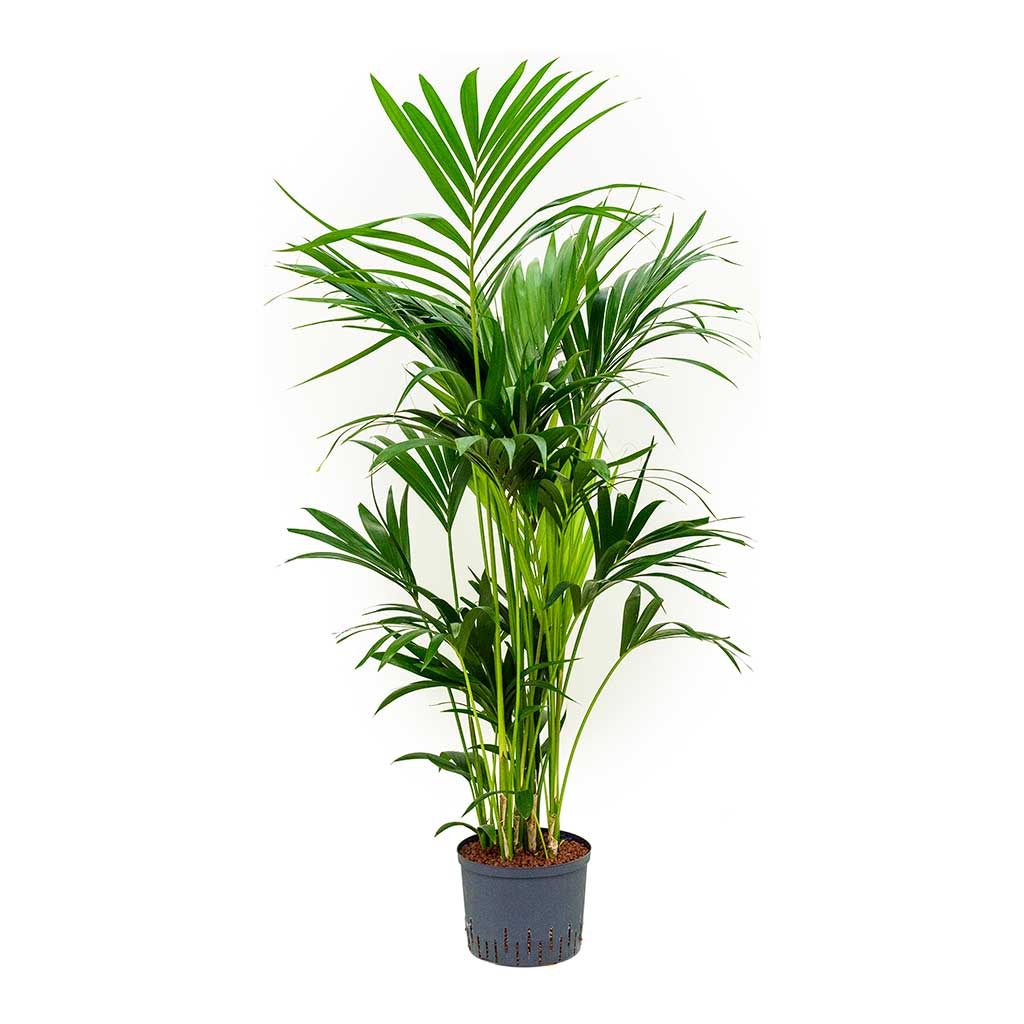Howea – Kentia Palm – HydroCare
The HydroCare version of the Kentia Palm is a perfect indoor palm. Elegant, air-purifying and resilient, it can tolerate some neglect, cooler temperatures and dry air conditions making it a low maintenance and trouble-free palm to provide lush, leafy, tropical foliage and an exotic element to any home or office interior. Howea forsteriana is also sometimes called the Sentry Palm or Thatch Palm.
HydroCare
– Howea – Kentia Palm Care & Info Guide
Horty Hints
A gentle grooming! Dust (or shower) from time-to-time and remove any dead stems, cutting close to the trunk. Brown tips can be trimmed if desired, but avoid cutting into any green foliage.
Wave goodbye to the dry! To avoid tips drying out and turning brown, mist regularly or place in a high humid environment away from frequent traffic.
Too much sun isn’t fun! If leaves are fading, bleaching or spotting, the palm is receiving too much direct light. Placing in an east or west-facing window will provide it with the right level of light.
Light
Prefers bright, indirect light but will tolerate shade. Direct morning or afternoon sunlight for a few hours a day should not harm an established plant, providing it is not too harsh.
Watering
Keep an eye on the water meter. Water when the meter has been on minimum for 7 to 10 days. Check out our HydroCare set up guide for more information.
Temperature
The Howea forsteriana prefers average household temperatures: between 16-24°C, but do not allow it to fall lower than 13°C. Avoid cold draughts.
Humidity
Howea forsteriana prefers increased humidity levels. Place on a shallow gravel tray filled with water and mist regularly. Ideal for bathrooms and kitchens.
Feed
Add a Hydroculture liquid feed every 2 to 3 waterings during the spring and summer months.
Height & Growth Rate
The Kentia Palm is a very slow-growing plant which typically reaches an ultimate indoor height of around 2 to 3 metres.
Please note: each plant is unique so available heights are approximate and the plant you receive may vary by ±10%.
Toxicity
This palm is non-toxic and therefore safe around small children and animals.
Air Purifying
Palms clean and improve air quality by filtering toxins from the surrounding environment.
Origin
Howea forsteriana originates from Lord Howe Island, Australia.



































